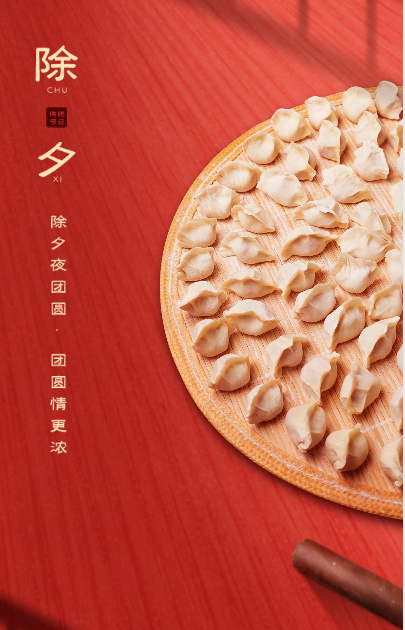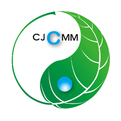
As the sound of firecrackers bids farewell to the old year and the spring breeze brings warmth, we welcome the new year. New Year’s Eve is the last night of the year, and after tonight, we enter the beginning of the new year, the Spring Festival. Therefore, New Year’s Eve is a festival of bidding farewell to the old and welcoming the new, a time for renewal.
Traditional Chinese Medicine (TCM) emphasizes the concept of “the unity of heaven and man, and the correspondence of all things.” The understanding and treatment of diseases are closely related to the seasons. New Year’s Eve often coincides with the Great Cold and the Beginning of Spring. At this time, the Jueyin (Liver) wind and wood rise, which can release the hidden evil qi within the body.
The Huangdi Neijing (Yellow Emperor’s Inner Canon) states: “If the essence is not stored in winter, there will surely be warm diseases in spring.” This highlights the importance of supporting the righteous qi and expelling the evil qi during this period. Today, I will share a good formula for supporting the righteous qi and expelling the evil qi.
Shen Su Decoction (Ren Shen Su Ye Yin)


The Shen Su Decoction is derived from the Taiping Huimin Heji Ju Fang. Ren Shen (Ginseng) supports the righteous qi, while Su Ye (Perilla Leaf) expels evil qi. In addition, it contains Ge Gen (Kudzu Root), Qian Hu (Hogfennel Root), Ban Xia (Pinellia), Fu Ling (Poria), Chen Pi (Dried Tangerine Peel), Mu Xiang (Aucklandia), Zhi Ke (Bitter Orange), Jie Geng (Platycodon), and Zhi Gan Cao (Honey-Fried Licorice), forming a formula that benefits qi, releases the exterior, regulates qi, and transforms phlegm.
It primarily treats symptoms of qi deficiency with external wind-cold and internal phlegm-dampness, presenting as chills and fever, headache without sweating, cough with nasal congestion, white phlegm, shortness of breath, reluctance to speak, fatigue, and weakness.
▋Composition, Dosage, and Administration
Ren Shen 6g, Su Ye 6g, Ge Gen 6g, Qian Hu 6g, Fu Ling 6g, Ban Xia 6g, Chen Pi 4g, Mu Xiang 4g, Zhi Ke 4g, Jie Geng 4g, Zhi Gan Cao 4g, decoct in water for oral administration.
▋Su Ye and Ge Gen
This formula has two chief herbs. First, let’s discuss Su Ye. It is pungent and warm, entering the lung and spleen meridians, and has the functions of releasing the exterior, dispelling cold, regulating qi, and calming nausea.
In this formula, Su Ye primarily exerts its effect of releasing the exterior and dispelling cold, treating symptoms of chills and fever, headache without sweating, etc. Compared to Ma Huang (Ephedra), which treats wind-cold excess, Su Ye has a gentler sweating effect, making it more suitable for individuals with a weak constitution, hence its role as a chief herb.
Su Ye also has the function of regulating qi and the stomach. When enjoying Korean BBQ, besides wrapping the meat in lettuce, do you also use Su Ye? If you are a BBQ lover, you may have noticed that eating it with Su Ye helps prevent bloating. This is because Su Ye can regulate qi and awaken the spleen, effectively alleviating bloating and discomfort in the stomach area caused by greasy food.
Lastly, Su Ye can also stop vomiting and calm the fetus, providing good efficacy for pregnant women experiencing nausea and vomiting.
Ge Gen is sweet and pungent, entering the spleen and stomach meridians. It is often referred to as “the ginseng of the north and the kudzu of the south” and is known as the “thousand-year ginseng,” being the dried root of the leguminous plant kudzu.
Ge Gen has the functions of releasing the exterior, dispelling evil, promoting circulation, raising yang, stopping diarrhea, and detoxifying alcohol. In this formula, it works alongside Su Ye to release the exterior.

When discussing Ge Gen, we cannot forget about Ge Gen Tang (Kudzu Decoction). The symptoms described in the Shang Han Lun (Treatise on Cold Damage) for Ge Gen Tang are “stiffness and pain in the neck and back, no sweating, aversion to wind.” We mainly focus on the first part, which refers to stiffness and discomfort in the neck. This symptom can occur not only in cervical spondylosis but also in colds, where adding Ge Gen or using Ge Gen Tang with modifications can be effective.
Ge Gen has the effect of “promoting fluids and relaxing the muscles.” Many people believe that Ge Gen can “generate fluids and quench thirst,” but this is not entirely accurate. Ge Gen works by invigorating the stomach qi, raising the clear yang, allowing the fluids in the stomach to moisten the neck muscles and alleviate stiffness, or it can moisten the mouth and quench thirst. The difference between “generate” and “raise” is subtle, yet the principles are entirely different.
▋Ban Xia, Chen Pi, Fu Ling, Mu Xiang, Jie Geng, Zhi Ke, Qian Hu
This formula contains many ministerial herbs, totaling seven. At first glance, it may seem chaotic, but in reality, each herb plays its role effectively. We can roughly divide them into two groups: Jie Geng, Qian Hu, and Zhi Ke form the group for descending qi and stopping cough, while Ban Xia, Chen Pi, Fu Ling, and Mu Xiang form the group for regulating qi and transforming phlegm.
First, let’s discuss the descending qi and stopping cough group. Coughing is related to the inability of lung qi to descend. TCM believes that the lungs have a dual function of dispersing and descending. Currently, the imbalance of lung qi has led to coughing symptoms, and we need to find ways to restore its dispersing and descending functions.
In this formula, Jie Geng can help disperse lung qi upwards, while Qian Hu and Zhi Ke help descend lung qi. This coordinated action restores the lung’s dispersing and descending functions in an orderly manner.
Next, regarding the regulating qi and transforming phlegm group, we see Ban Xia, Chen Pi, Fu Ling, and the assistant herb Zhi Gan Cao. Sensitive individuals may immediately think of the basic phlegm-transforming formula Er Chen Tang, which is commonly used for treating damp-phlegm syndrome.
When transforming phlegm, it is also necessary to add some qi-regulating herbs, as regulating qi can enhance the phlegm-transforming effect. Think of phlegm as a puddle of water on the ground; regulating qi is like the wind. If we add some qi-regulating herbs, won’t the water on the ground dry up faster?
Mu Xiang has a good qi-regulating effect. When combined with Chen Pi and Zhi Ke, it further enhances the qi-regulating function, thus improving symptoms such as cough with phlegm, chest tightness, and a white greasy tongue coating.

▋Ren Shen
Ren Shen is a familiar friend to everyone. Whether or not one regularly pays attention to TCM health preservation, they know this herb as a “miraculous medicine that can bring the dead back to life.”
In many films and dramas, there are scenes where the protagonist is severely injured and on the brink of death. At this moment, a miraculous doctor appears, takes out a thousand-year-old mountain ginseng, cuts off a slice for the protagonist to hold in their mouth, and the dried vital energy quickly recovers. Then, through powerful internal skills, the medicinal power of ginseng is refined for healing. Although we know this is an artistic exaggeration, the powerful qi-tonifying effect of Ren Shen is evident.
Ren Shen can tonify the spleen and benefit the lungs, greatly replenishing the body’s original qi. It is effective for symptoms of qi deficiency such as shortness of breath, reluctance to speak, fatigue, and weakness. Therefore, even though it is an assistant herb, it still holds a place in the formula’s name.
▋Zhi Gan Cao
Zhi Gan Cao, as an assistant herb, not only harmonizes the other herbs but also supplements qi and regulates the middle.
▋Application
The Shen Su Decoction primarily treats symptoms of qi deficiency with external wind-cold and internal phlegm-dampness, presenting as chills and fever, headache without sweating, cough with nasal congestion, white phlegm, shortness of breath, reluctance to speak, fatigue, and weakness. In clinical use, adjustments can be made based on the severity of the patient’s symptoms.
If the patient is expectorating yellow phlegm, it indicates that the phlegm-dampness has transformed into heat. In this case, using Er Chen Tang to treat it may not yield satisfactory results. We can add Huang Qin (Scutellaria) 5g and Yu Xing Cao (Houttuynia) 5g to clear heat and transform phlegm.
If the patient’s symptoms of chills and fever are more severe, and Su Ye and Ge Gen may not be effective quickly, we can add some exterior-releasing herbs, such as Jing Jie (Schizonepeta) 5g and Fang Feng (Siler) 5g, to enhance the exterior-releasing effect. It is important to note that we should not use Ma Huang and Gui Zhi (Cinnamon Twig) here, as the patient also has symptoms of qi deficiency, and the sweating power of Ma Huang and Gui Zhi is too strong, which may harm the fluids and exhaust the qi.
▋Precautions
1. During medication, avoid spicy, stimulating, raw, cold, and greasy foods; a light diet is recommended.
2. For those with external wind-cold and intact righteous qi, this formula is contraindicated.
On this family reunion day, I wish everyone health and happiness. Happy New Year’s Eve!

The content of this article is for reference only. Non-professionals in TCM should not attempt to use the herbs.
Original submission:[email protected] (email), chunfeng52566 (WeChat);Business cooperation: tcmrun (WeChat)

